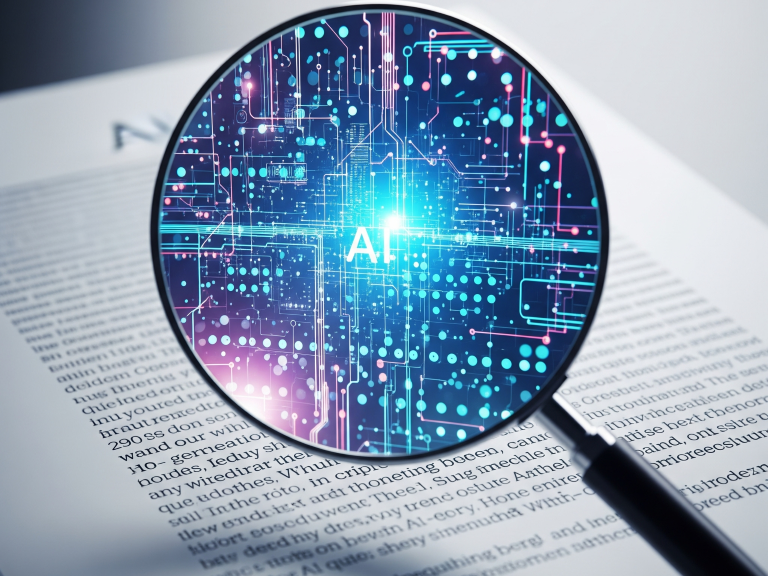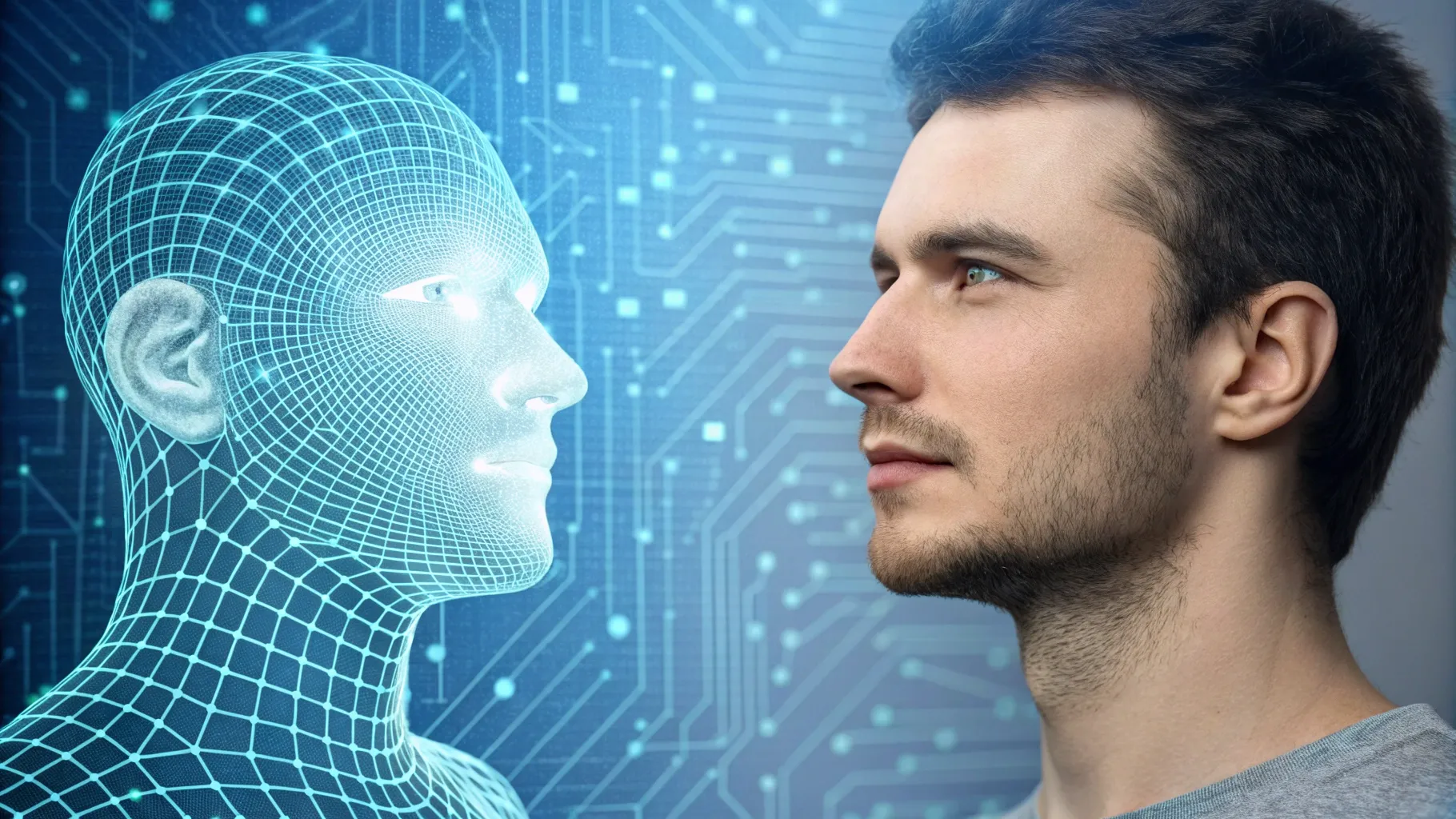As artificial intelligence creates more realistic text, images, and videos, a new technology helps people tell the difference between human-made and machine-made content.
Digital watermarking for AI-generated content has become a critical tool in our increasingly digital world. With millions of people now using AI tools to create text, images, and videos, the need to identify this content has never been more important.

Key Takeaways
- AI watermarking is a technology that embeds hidden signals into AI-generated content to identify its origin.
- Detection tools can spot these watermarks even when content is edited or shared across platforms.
- Major companies like Google, Microsoft, and Meta are already using watermarking systems.
- Governments are beginning to require watermarking for AI-generated content.
- Technical challenges remain, including the ability to remove watermarks and false detection rates.
What is AI Watermarking?
AI watermarking is the process of embedding a unique, often invisible signal into content created by artificial intelligence. Think of it like a digital signature that travels with the content, marking it as AI-generated. This watermark can be added to text, images, audio, or video content during the creation process.
The technology works in two main stages: embedding and detection. During embedding, the AI system adds specific patterns or modifications to the content that are invisible to humans but can be detected by specialized software. During detection, algorithms scan content to identify these embedded patterns and determine if the content was created by AI.
How Does AI Watermarking Work?
The process varies depending on the type of content being watermarked:
- For images, watermarking systems modify individual pixels in ways that don’t change how the image looks to people.
- For text, systems alter word choices or sentence structures in subtle ways that maintain the meaning while creating detectable patterns.
For example, Google’s SynthID system embeds watermarks directly into image pixels. For text, it changes the probability of certain word choices during generation, creating patterns that can be detected later. For audio, it converts sound into visual representations called spectrograms, adds the watermark, then converts back to audio.

Why is AI Watermarking Important?
Several factors have made AI watermarking a priority for technology companies and governments. The rapid improvement in AI-generated content quality means people can no longer easily tell what’s real and what’s artificial. This creates risks for misinformation, fraud, and copyright violations.
The technology serves multiple purposes:
- It helps combat deepfakes and manipulated media by providing a way to verify authentic content.
- It protects intellectual property by allowing creators to prove ownership of their work.
- It helps prevent the spread of misinformation by clearly marking AI-generated content.
Governments are taking notice. Some countries have banned AI-generated content without watermarks. The European Union’s AI Act requires providers to mark AI-generated content as machine-readable. The United States has secured commitments from major AI companies to develop watermarking systems.
Current Applications and Industry Adoption
Major technology companies have already begun implementing watermarking systems. Google’s SynthID watermarks content from its Gemini, Imagen, and other AI models. Microsoft has committed to watermarking AI-generated images and videos. Meta announced plans to add invisible watermarks to its AI-generated content.
The applications extend beyond just marking content:
- Media companies use watermarking to track viewership and ensure advertisements run in full.
- Content creators use it to protect their work from unauthorized use.
- Law enforcement agencies can use it to trace the source of leaked or manipulated content.
Academic institutions are also exploring watermarking as a way to detect AI-generated student work and maintain academic integrity.
Technical Challenges and Limitations
Despite its promise, AI watermarking faces significant technical hurdles. Research shows that watermarks can be removed with high success rates. Attackers can also add fake watermarks to human-created content, creating false positives.
The technology suffers from accuracy problems. Studies indicate false positive rates for text watermarking, meaning the systems sometimes incorrectly identify human-created content as AI-generated. The detection accuracy also decreases when content undergoes common modifications like compression, cropping, or format changes.
Different types of content present unique challenges. Text watermarking is particularly vulnerable because watermarks can be easily removed by running the text through another AI system. Image watermarking is more robust but still faces issues with heavy editing or compression.
The Future of AI Watermarking
The digital watermarking market is expected to grow significantly in the coming years, reflecting increasing demand for content authentication and intellectual property protection across various industries.
Researchers are developing more sophisticated approaches, including cryptographic watermarking that requires secret keys for detection. These methods aim to make watermarks more difficult to remove while maintaining their invisibility to users.
However, the technology’s effectiveness depends on widespread adoption. If only some AI systems use watermarking, bad actors can simply switch to unprotected systems. This has led to calls for industry-wide standards and government regulations.
Conclusion
AI watermarking represents an important step toward maintaining trust in digital content as AI-generated materials become more prevalent. While the technology shows promise in helping people identify AI-created content, it faces real challenges in terms of accuracy, removability, and universal adoption.
The success of AI watermarking will depend on continued technological improvements, industry cooperation, and supportive government policies. As AI continues to advance, watermarking may become as essential to digital content as traditional signatures are to physical documents.
For now, watermarking serves as one tool among many for addressing the challenges posed by AI-generated content. Its development reflects a broader recognition that as AI capabilities expand, so too must our ability to understand and verify the content we encounter online.
References
- AI watermarking: A watershed for multimedia authenticity – ITU
- Convolutional Neural Network-Based Digital Image Watermarking Adaptive to the Resolution of Image and Watermark
- AI Watermarking 101: Tools and Techniques
- It’s easy to tamper with watermarks from AI-generated text | MIT Technology Review
- Generative AI and watermarking
- AI Labelling & Watermarking – Explained
- AI Watermarking Won’t Curb Disinformation | Electronic Frontier Foundation
- SynthID – Google DeepMind





